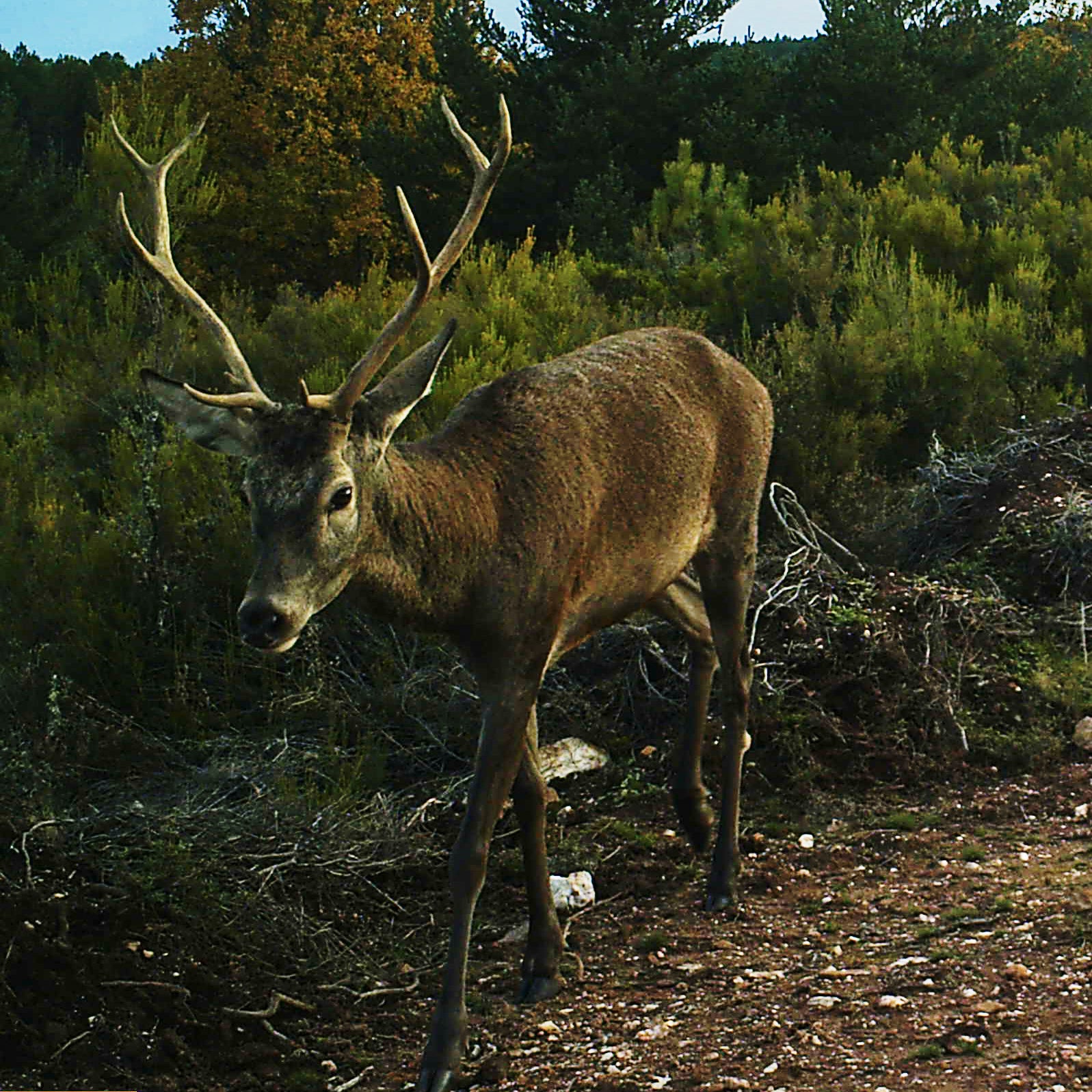I'm excited. My shirt is soaked in sweat, my lungs are burning, and my feet are aching. An hour into a climb up a steep wooded hillside, winding my way off trail through tall pines, it feels like the night before Christmas. Strapped to a tree a mile higher up is the prize. Having sat quietly for two weeks, it has stayed vigilant, eyes focused for any sign of movement.
I’m headed to pick up my camera trap.��
It's fascinating to think about what's roaming the woods, and no matter how much time we spend in the field, the information that can be gathered from a camera trap (or trail camera) is immense. Many of my mornings and evenings are spent sitting quietly beneath a tree, binoculars in hand, watching for signs of life. When I’m not there, my camera is.��Whether you’re a hunter, biologist, or just want to know more about the local wildlife, a camera trap will open a window into a hidden world.��
What Is a Camera Trap?
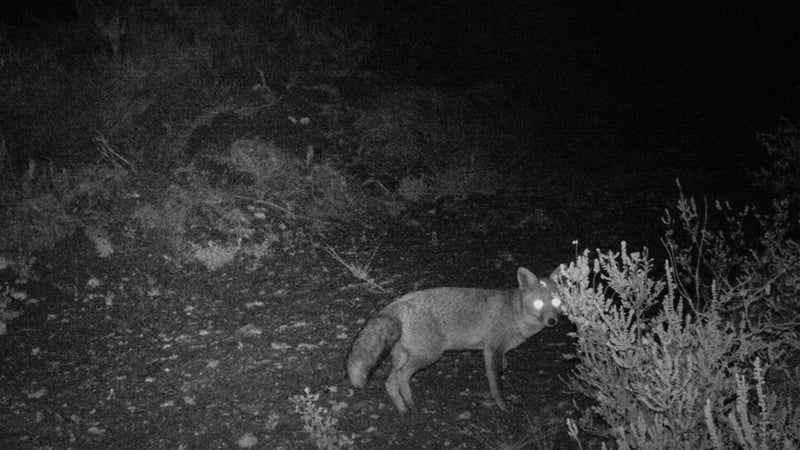
The basic components of a modern camera trap are a camera, a sensor (such as a one), a flash, a strap to attach the trap to an anchor point, and a power supply—all of which is housed in a sturdy, weatherproof casing. Features, as well as price, go up from there. The traps are designed to photograph everything from small mice moving through the underbrush to a cougar high up a snow-capped mountain. While collecting image data, the cameras also store other valuable pieces of information, such as time, date, temperature, and moon phase.��
In the past, trail cameras were triggered by that animals would trip when they crossed the paths. Today remote camera trapping is a good deal more sophisticated, thanks to the development of digital photography and heat and motion sensors. And, due mostly to and , there's now enough consumer demand for these devices that they've become affordable.��
Which One Should I Buy?
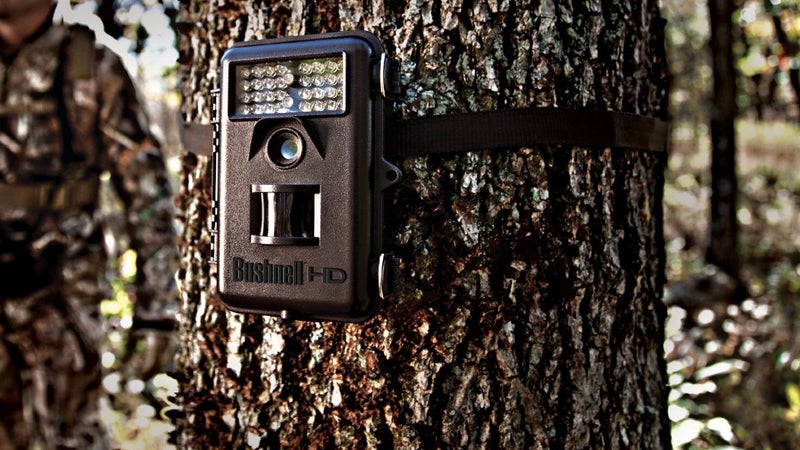
There are lots of companies making camera traps, whose features and quality vary tremendously. That said, I do have my favorites, in particular the models from Bushnell and Reconyx. If you’re just getting started, . It’s eight-megapixel camera makes fairly sharp images, and it can shoot HD video. It has 32 black LEDs for night vision. It runs for up to one year on a single set of batteries. (All the camera trap images in this article were captured with this model.)
If you have a bit more money to spend, check out ($594). It has a few smart upgrades, including no-glow infrared illumination and a higher-quality build, that, while not essential, are nice to have.
For either trap, you'll want as large a memory card as it'll accept, as video takes up a lot of space, as well as high-quality lithium batteries. Also, keep this in mind: once you get one, you’re going to want another one.��While you’re at it, pick up a lock, like the and a cable, like . You'll want to lock the camera body and secure it to a large tree.��
Placement
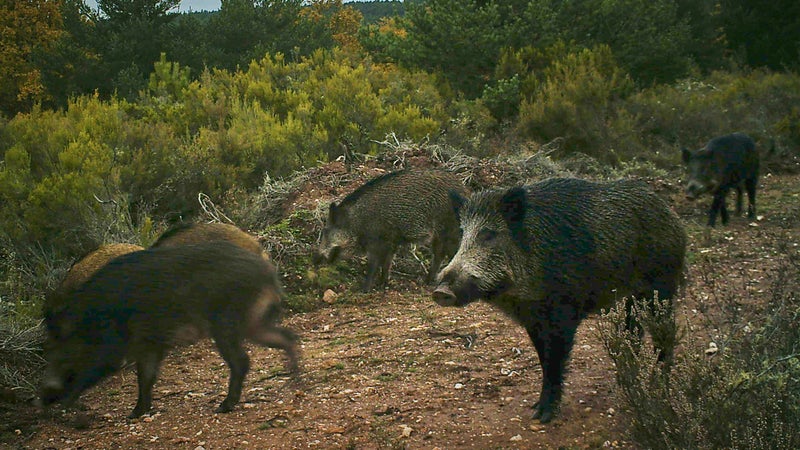
So you have your camera trap. Now you have to figure out where to put it, which depends on what you're looking to capture and where you're based.��
Terrain is often the determining factor when placing a trap. Look at a topographic map of the area you're interested in investigating, and then compare that to satellite imagery. Is there a fairly level, sheltered path up against an impassable area such as a cliff or rocky outcrop? Sounds like a pretty good spot to check out. Look for features that funnel wildlife (such as river crossings) along a certain route and past a specific point. Remember that the actual range of your camera trap is limited by the sensitivity of the sensor and the reach of the flash—you want an animal to walk right by the camera in order to get a good shot.��
If you have a target species in mind, say whitetail deer, you need to think a little harder before setting the camera. Where do the animals feed, where do they bed, and how do they get from one place to another? Time of year, availability of food, local disturbance, and population dynamics all play a role in deciding where to place your trap. Read up on your species, talk to people in the area, and immerse yourself in the world of any given animal.
As a rule, placing a camera along well-traveled routes or at feeding sites is your best bet. Spots along remote logging roads and human trails can yield good results, too: animals find it easier to travel along these open paths than through brush.��Find an animal trail leading to a likely feeding spot, check out how high the overhanging brush is, and that will give you an indication of the tallest animal that could pass that way—the trap should be a little lower than that height. Look for a good tree to attach your trap, then mount it and be patient. The more time you let pass between checking your camera and moving it to another spot, the more likely you are to get gold. Some species, particularly predators, travel large distances and it may take some time before they visit one spot a second time.��
If you're lucky enough to have a member of Canis lupus stroll down your chosen path, without a lure, he isn’t going to exactly pose for the camera. More often than not, an animal will come trotting by, not slowing down one bit as it passes the lens. So you need the camera to be angled in such a way as to give you the most exposure time, both for the sensor to trigger, but also to get the animal in the shot for the maximum amount of time. Positioning your camera at approximately a 45-degree angle facing the path is your best bet. The placement height depends on the anchor, the sensor, the size of the target species, and nearby vegetation.
Some high-end cameras have a built-in image preview function, but if yours doesn't, just bring along a handheld camera, tablet, or laptop, and spend a few minutes walking around in front of the lens, reviewing the images and then adjusting the shot.��
Remember: you are not the only person wandering around in the woods, so try to make your trap as inconspicuous as possible. And know that your presence alters the world you pass through. Take care to disturb the environment as little as possible.��
Attractants
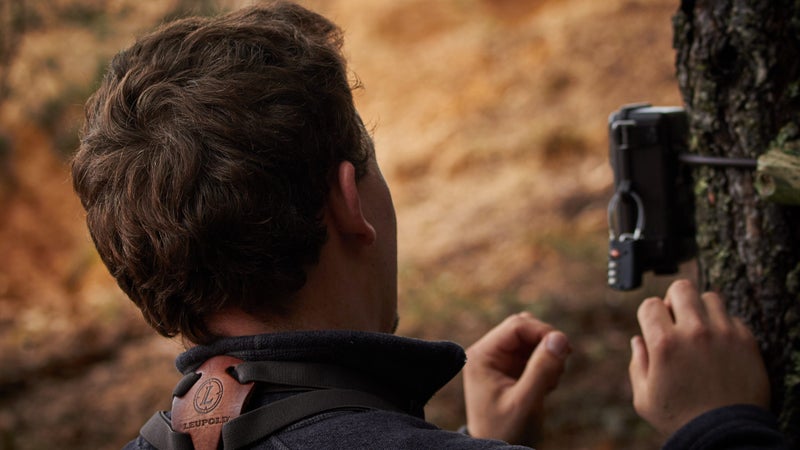
The ethics and legality of using attractants, baits (food), and lures (scents) to bring wildlife into range of your camera trap vary tremendously. I will happily place my camera next to a carcass that I find deep in the woods, but I prefer not to use any artificial lures. They do, however, work. Check your local regulations and start by contacting your state's Fish and Game department.
There are many commercial lures available online, which are normally derived from animal urine or scent glands of creatures such as mink and beaver. The same way that a hunter will use doe urine to bring a buck to his treestand or a trapper will use beaver castor to snare a wolf, these lures will stop animals in front of your camera. Areas where an animal—such as a mink—marks in the wild can bring in a wide range of critters, too.��
And if you happen to have jaguars in your neck of the woods, you can always go with a Calvin Klein fragrance.��


